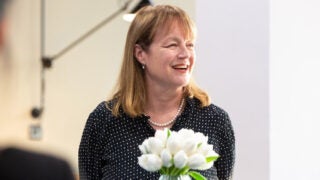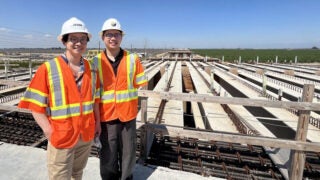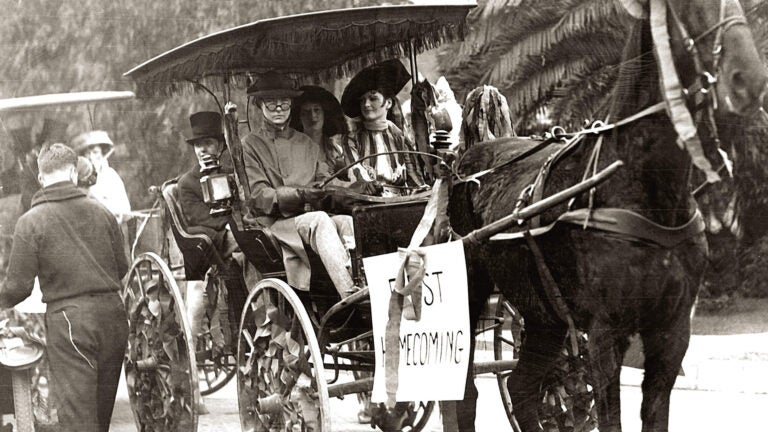
(Photos/Courtesy of the USC Alumni Association)
Celebrating a Century of the Trojan Family
Since 1923, the USC Alumni Association has brought Trojan graduates together to engage with each other and build community. Here’s a look at the most pivotal moments of USC’s alumni engagement history, as well as the first 100 years of the USC Alumni Association.
1923
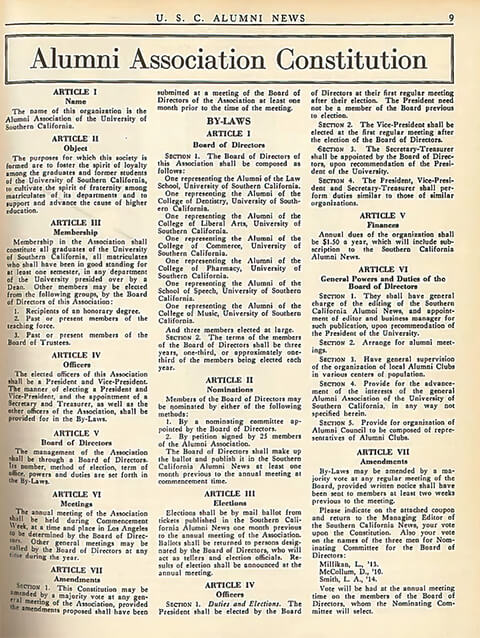
On June 21, shortly after USC’s 40th commencement, a community of alumni, volunteer leaders and USC administrators come together in what is today known as Founders Park to officially establish the General Alumni Association (GAA). While the Alumni Association of the College of Liberal Arts was formed in 1885, the GAA is created for the whole university, and claims more than 4,800 members by 1924. Edward. L. Doheny Jr. ’16 is named the first GAA president, and annual dues are $1.50.
1924
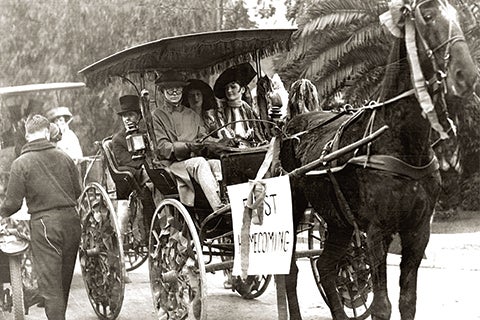
USC holds its first homecoming on Dec. 5-6 and shuts out Syracuse University 16-0 in the first-ever homecoming game at the Los Angeles Memorial Coliseum. At the time, the Coliseum was just a year old.
1925
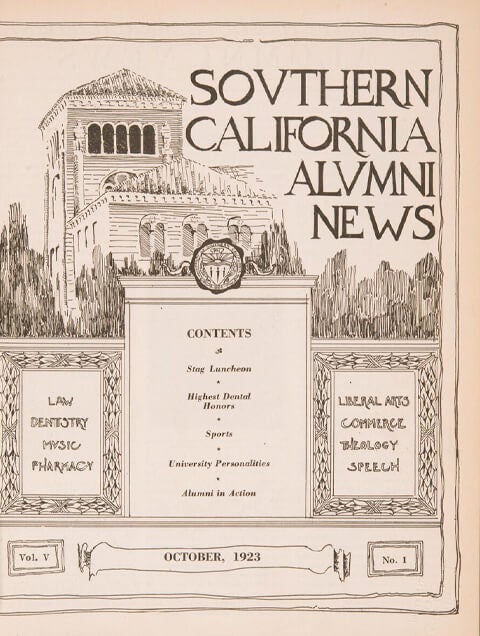
The alumni magazine, first introduced in 1917 and published intermittently under various names, becomes the Southern California Alumni Review and publishes until the summer of 1969. After that, USC Trojan Family Magazine — which was first introduced as Trojan Parent in 1968 — expands its coverage to include alumni news.
1927
At the university’s request, the GAA creates USC’s first Bureau of Employment, a job placement office in the Student Union Building for students and alumni. The GAA executive director’s office is next to the USC football coaches’ offices.
1929
GAA kicks off a fundraising drive to build a library and physical education building, but the Great Depression cut short these efforts. Throughout the 1920s and 1930s, the GAA served as the university’s primary fundraiser.
1930
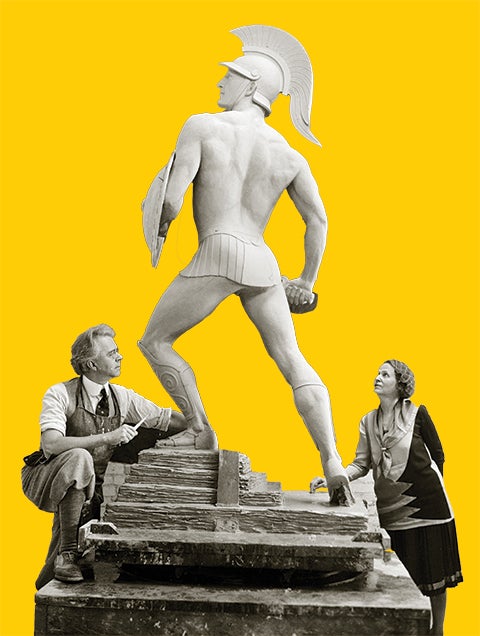
The GAA raises funds and then donates the Trojan Shrine (Tommy Trojan) to USC for the university’s 50th anniversary.
1932
Retired Harvard economist Thomas Nixon Carver (Class of 1891) receives the first Asa V. Call Alumni Achievement Award (named for the 1931-32 GAA president) and kicks off an annual tradition. Subsequent recipients of USC’s highest alumni honor include astronaut Neil Armstrong, opera great Marilyn Horne and screen icon John Wayne.
1935
GAA purchases and donates the land around the new Doheny Memorial Library to USC, a space today known as Alumni Memorial Park.
1949
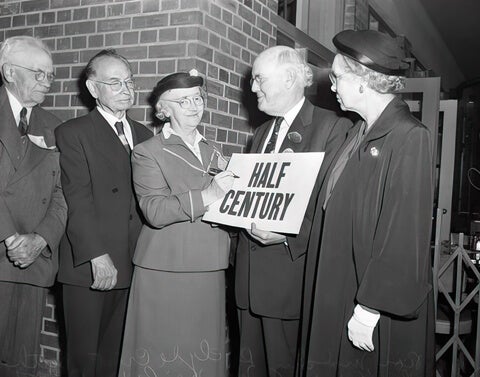
Half Century Trojans, the university’s senior alumni group, is founded. Today, it’s one of five alumni association generational programs. The others are Society 53, the student outreach program for current students; Young Alumni (alumni ages 22-35); Second Decade Society (alumni ages 35-45) and Encore Trojans (alumni ages 46-71).
1950
Alumni action saves USC’s Fraternity Row from being razed for the Harbor Freeway extension.
1958
Trojan League of Los Angeles is established.
1961
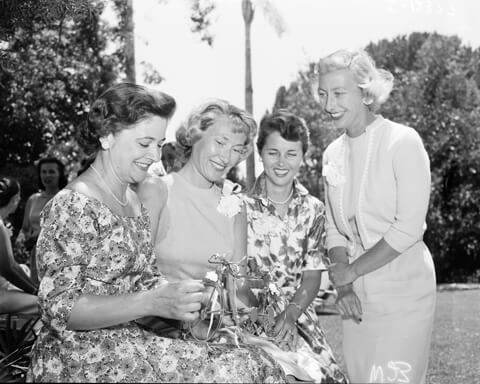
The Alumnae Coordinating Council is founded to encourage interest and participation by all alumnae in university and alumni programs. It provides a forum for USC women’s organizations to connect and share ideas.
1967
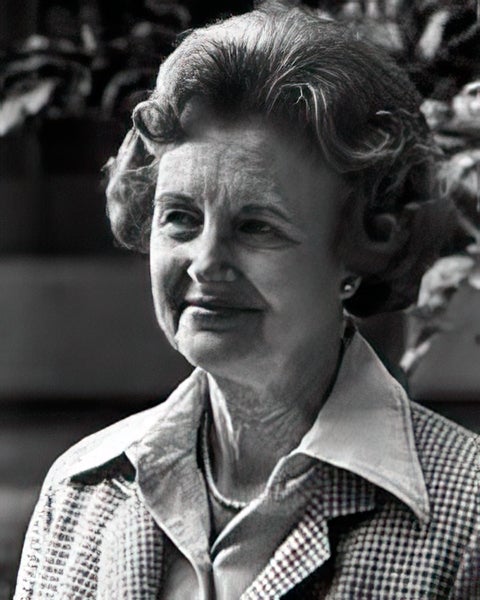
Phyllis Norton Cooper ’35, LLB ’38 becomes the first GAA woman president.
1972
USC living alumni population reaches 100,000.
1973
Mexican American Alumni Association (today’s Latino Alumni Association) is founded. In 2016, Henry G. Cisneros, former mayor of San Antonio and secretary of the U.S. Department of Housing and Urban Development, called the USC Latino Alumni Association “the most effective, active, robust minority-founded alumni association of any university in America.”
1976
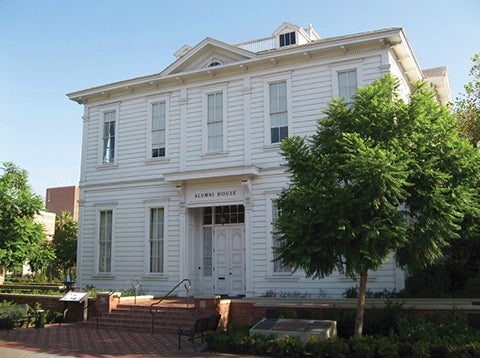
The GAA moves into the newly renovated Widney Alumni House, the university’s oldest building and a state historic monument since 1955. Then located on Childs Way across from Doheny Memorial Library, Widney Alumni House was moved in 1997 to the end of Pardee Way — its fourth campus address since 1880.
1976
Ebonics Support Group (today’s Black Alumni Association) is founded.
1978
A cruise on Germany’s Rhine River with 138 Trojans marks the beginning of USC Trojan Travel.
1982
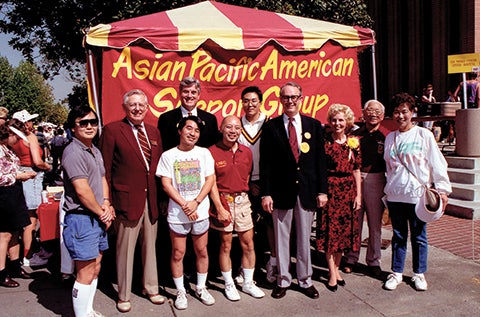
Asian Pacific Support Group (today’s Asian Pacific Alumni Association) is formed.
1990
USC living alumni population hits 200,000.
1992
USC Lambda (today’s Lambda LGBTQ+ Alumni Association) is founded. “While the atmosphere in the 1990s was one of tolerance, it wasn’t one of acceptance,” founder Don Gabard says. “USC is known for its ability to connect alumni with students, for networking and mentoring opportunities. But in our LGBTQ+ community, inclusion was not a foregone conclusion in that mentoring network.”
1996
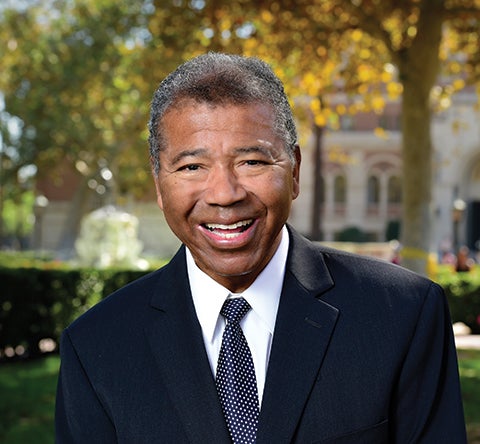
Len Fuller ’68 becomes the first Black GAA president.
1998
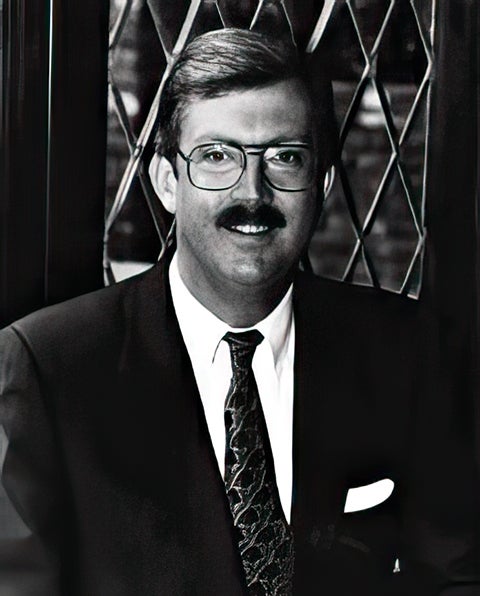
Several years after discontinuing its membership dues programs, the GAA changes its name to the USC Alumni Association. Then-USCAA president William Allen ’79 coins the phrase “lifelong and worldwide,” which becomes the association’s tagline.
2001
The USC International Alumni Conference is launched in Hong Kong to showcase USC as a major international university and bolster USC networking among alumni with professional interests in Asia in business, commerce and education. The conference is organized by the Office of the USC Provost, USC’s International Offices in Asia and the USC Alumni Association. Trojan Family Day or Trojan Family Weekend is recast as USC’s Parents Weekend for a short time.
2008
USC living alumni population hits 300,000.
2010
After 34 years of calling the Widney Alumni House home, the USCAA moves its headquarters to the Ronald Tutor Campus Center’s Epstein Family Alumni Center.
2012
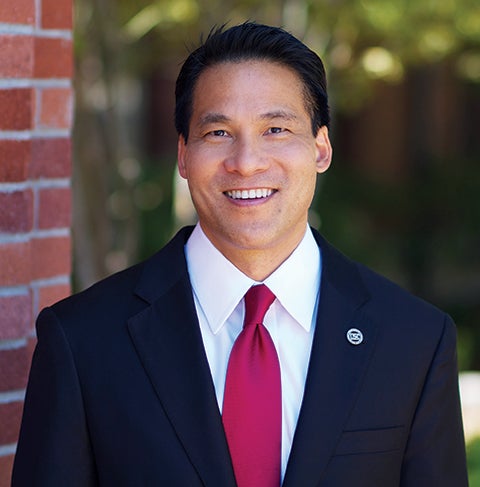
Mitchell Lew ’83 MD ’87 becomes first Asian USCAA president. The inaugural USC Alumni Day of SCervice draws more than 1,500 Trojans to participate in 54 community service projects across 18 states and nine Nations. At the time, Katie Kim ’09 said: “The best part of my SCervice Day was knowing that thousands of other USC alumni across the country and beyond were giving back to the community.”
2014
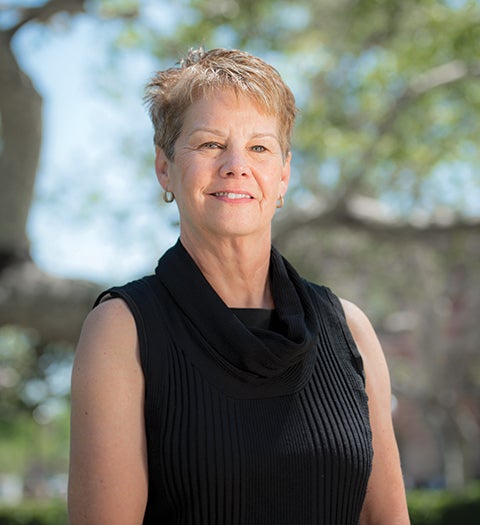
Amy Ross PhD ’86 is named the USCAA’s first LGBTQ+ president.
2017
USC living alumni population hits 400,000.
2018
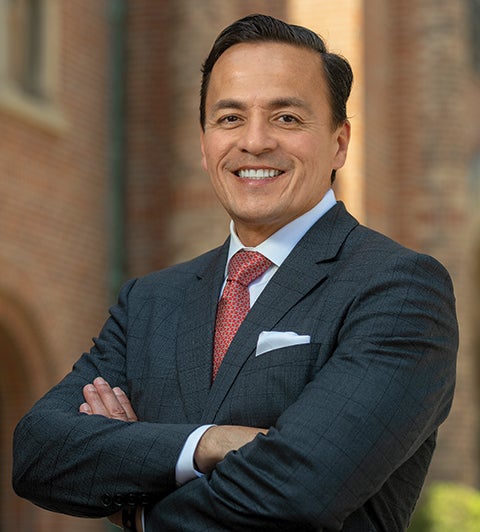
Michael Felix ’83 becomes USCAA’s first Latino president.
2020
USC Career Center and the USCAA launch the Trojans to Trojans Initiative, where new graduates and current students can connect with alumni to get career advice, learn about a field or industry and cultivate professional connections and opportunities by signing up for the Trojan Network, a free online platform. Fight Online!
2023
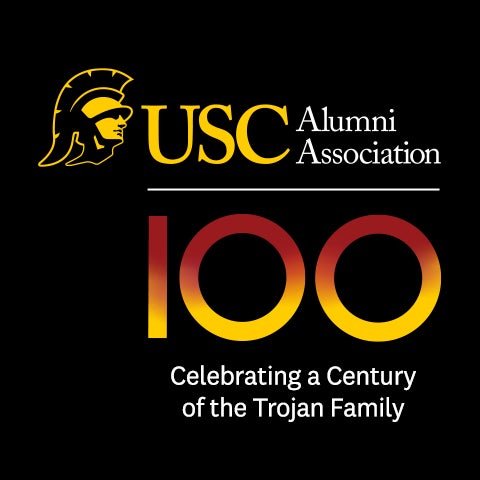
USCAA celebrates 100 years.

